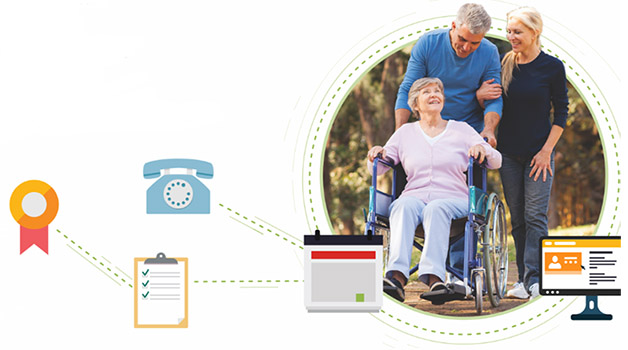Blog testing page title
Lorem ipsum dolor sit amet, consectetur adipiscing elit. Suspendisse hendrerit lectus sapien, ultricies tincidunt massa molestie convallis. Quisque porttitor eros bibendum arcu mattis, sit amet facilisis tellus tristique. Donec porta mattis consequat. Phasellus tincidunt rhoncus purus, a commodo lacus blandit quis. Nam facilisis posuere varius. Donec id suscipit nisl, vel ultricies metus. Suspendisse tincidunt urna quis commodo ornare. Sed sit amet odio augue.
Lorem ipsum dolor sit amet, consectetur adipiscing elit. Suspendisse hendrerit lectus sapien, ultricies tincidunt massa molestie convallis. Quisque porttitor eros bibendum arcu mattis, sit amet facilisis tellus tristique. Donec porta mattis consequat. Phasellus tincidunt rhoncus purus, a commodo lacus blandit quis. Nam facilisis posuere varius. Donec id suscipit nisl, vel ultricies metus. Suspendisse tincidunt urna quis commodo ornare. Sed sit amet odio augue.
Lorem ipsum dolor sit amet, consectetur adipiscing elit. Suspendisse hendrerit lectus sapien, ultricies tincidunt massa molestie convallis. Quisque porttitor eros bibendum arcu mattis, sit amet facilisis tellus tristique. Donec porta mattis consequat. Phasellus tincidunt rhoncus purus, a commodo lacus blandit quis. Nam facilisis posuere varius. Donec id suscipit nisl, vel ultricies metus. Suspendisse tincidunt urna quis commodo ornare. Sed sit amet odio augue.
Ruby Test a Blog Post
Body field. Lorem ipsum dolor sit amet, consectetur adipiscing elit. Aliquam consectetur nibh id imperdiet iaculis. Phasellus nec tempus mi, at ullamcorper nisl. Donec nec tortor lacinia, congue risus ac, dapibus dui. Fusce pretium sem consectetur porta tincidunt. Suspendisse suscipit a felis eget sagittis. Phasellus sit amet nibh sed lorem gravida scelerisque at in augue. Cras congue mattis odio, sit amet tristique diam pellentesque in. Sed nisl odio, feugiat quis nisl et, mattis posuere urna. Etiam consequat ligula lorem, eget sodales mauris hendrerit quis. Integer ultricies euismod mi, in mattis ligula auctor eu.
Lorem ipsum dolor sit amet, consectetur adipiscing elit. Aliquam consectetur nibh id imperdiet iaculis. Phasellus nec tempus mi, at ullamcorper nisl. Donec nec tortor lacinia, congue risus ac, dapibus dui. Fusce pretium sem consectetur porta tincidunt. Suspendisse suscipit a felis eget sagittis. Phasellus sit amet nibh sed lorem gravida scelerisque at in augue. Cras congue mattis odio, sit amet tristique diam pellentesque in. Sed nisl odio, feugiat quis nisl et, mattis posuere urna. Etiam consequat ligula lorem, eget sodales mauris hendrerit quis. Integer ultricies euismod mi, in mattis ligula auctor eu.

Lorem ipsum dolor sit amet, consectetur adipiscing elit. Aliquam consectetur nibh id imperdiet iaculis. Phasellus nec tempus mi, at ullamcorper nisl. Donec nec tortor lacinia, congue risus ac, dapibus dui. Fusce pretium sem consectetur porta tincidunt. Suspendisse suscipit a felis eget sagittis. Phasellus sit amet nibh sed lorem gravida scelerisque at in augue. Cras congue mattis odio, sit amet tristique diam pellentesque in. Sed nisl odio, feugiat quis nisl et, mattis posuere urna. Etiam consequat ligula lorem, eget sodales mauris hendrerit quis. Integer ultricies euismod mi, in mattis ligula auctor eu.

Post details. Lorem ipsum dolor sit amet, consectetur adipiscing elit. Aliquam consectetur nibh id imperdiet iaculis.


Lorem ipsum dolor sit amet, consectetur adipiscing elit. Aliquam consectetur nibh id imperdiet iaculis. Phasellus nec tempus mi, at ullamcorper nisl. Donec nec tortor lacinia, congue risus ac, dapibus dui. Fusce pretium sem consectetur porta tincidunt. Suspendisse suscipit a felis eget sagittis. Phasellus sit amet nibh sed lorem gravida scelerisque at in augue. Cras congue mattis odio, sit amet tristique diam pellentesque in. Sed nisl odio, feugiat quis nisl et, mattis posuere urna. Etiam consequat ligula lorem, eget sodales mauris hendrerit quis. Integer ultricies euismod mi, in mattis ligula auctor eu.

AEA, SAG-AFTRA Member Shines Spotlight on Dental Discount Plan
Randy Redd, a writer and director based in Memphis, Tenn., has been a member of the Actors’ Equity Association (AEA) for 30 years and of SAG-AFTRA for nearly as long.
"I joined as an actor in ’90," Redd recalls. "It wasn’t until years and years later that I realized that the union is also affiliated with discount programs."
Redd was looking for a dentist a few years ago but felt discouraged by the expense of dental insurance. Instead, he turned to the Union Plus Dental Discount Plan, available through Careington.
"It seemed too good to be true at first," Redd describes. "But I saw a fantastic dentist who’s in the plan who just blew my mind. As a result of the discount plan, the cost is so low, and so affordable, for really first-rate care."
Through the Dental Discount Plan, union members, retirees, and their household family members can sign up and enjoy savings of 20% to 50% on dental care with one of the largest dental networks in the nation. Plans start at $7.95/month*.
"I had a great experience," Redd raves. "It’s really easy to find your way through Careington’s list of providers."
Redd recommends the Dental Discount Plan to other union members "all the time," he says.
He continues, "With Careington, I could get checkups and cleanings and regular care at the same level of care I’d been getting under any other plan. And the discounts are incredible. I had to get a root canal, and it’s incredible what I paid for that."
To learn more about the Union Plus Dental Discount Plan and other health savings options, visit unionplus.org/healthsavings.

*+$10 one-time, non-refundable enrollment fee
THIS PLAN IS NOT INSURANCE and is not intended to replace health insurance. This plan does not meet the minimum creditable coverage requirements under M.G.L. c.111M and 956 CMR 5.00. This plan is not a Qualified Health Plan under the Affordable Care Act. This is not a Medicare prescription drug plan. The range of discounts will vary depending on the type of provider and service. The plan does not pay providers directly. Plan members must pay for all services but will receive a discount from participating providers. The list of participating providers is at Union Plus Discount Dental Plan. A written list of participating providers is available upon request. You may cancel within the first 30 days after effective date or receipt of membership materials (whichever is later) and receive a full refund, less a nominal processing fee (nominal fee for MD residents is $5, AR and TN residents will be refunded processing fee). Discount Plan Organization and administrator: Careington International Corporation, 7400 Gaylord Parkway, Frisco, TX 75034; phone 800-441-0380.
This plan is not available in Vermont or Washington.

Union membership has been a constant in Randy Redd’s career, even as he’s changed paths and moved cities. The actor-turned-writer and director tapped into dental savings for union members through Union Plus a few years ago and has had nothing but good things to say about the Union Plus Dental Discount Plan ever since.

See the Savings with Flexible Spending Accounts (FSAs)
With health care costs on the rise year-over-year,1 employers and the government alike have created ways to help families manage medical expenses. One particularly popular program is known as a Flexible Spending Account (FSA). You might also hear it referred to as a Flexible Spending Arrangement.
Either way, FSAs allow you to funnel pre-tax dollars into an account to be used for qualifying health expenses, like copays, deductibles and most prescriptions – including glasses and contacts. The rate of allowable deductions is set by the IRS and may vary by tax year; for 2018, it’s $2,650.2 Plus, you can apply extra discounts to qualifying FSA purchases to save even more.
While FSA seems simple, understanding the ins and outs can help you get even more out of the program.
Your FSA Checklist:
- First things first. Check your FSA guidelines to understand what purchases qualify.
- Premium optical retailers fill up fast, so you’ll want to schedule an appointment early.
- Keep a record. You may need to provide receipts, so hold on to necessary paper work.
How do FSAs Work?
At the beginning of your plan period, you’ll set how much you want to contribute to your FSA. Some employers choose to contribute to FSAs, too. Check with yours to see what’s available.
What counts as a medical expense?
Qualifying expenses vary by plan, so you’ll want to start there. Broadly, medical expenses are defined as the costs of prevention, diagnosis and treatment of disease affecting any part of the body.3 Beyond medical services, they may encompass necessary costs for equipment, supplies and diagnostic devices.4
For vision, this may include:5
- Eye exams and prescription glasses (even name brand frames like those carried at LensCrafters®)
- Contact lenses and maintenance materials (like saline solution)
- Eye surgery to treat defective vision (think Lasik)
Can I Use My FSA Dollars for Everyone in My Family?
Yes. You may use FSA dollars for yourself, your spouse and dependents you’ve claimed on tax returns (visit IRS.gov for the run down).6
Does FSA Money Roll over from Year-to-Year?
Generally, FSAs are use it or lose it, though some arrangements can include a grace period up to 2 ½ months after the end of the year, or a $500 reimbursement for the following year.7 They may not include both. It’s also not required of employers, so confirm your specific arrangement.
What about Receipts?
Many FSAs provide debit cards to use when making your qualifying purchases. This makes it helpful to keep track of how much you’ve spent. Make sure to keep your receipts, though, as the IRS may ask for them.
With FSA, Don’t Delay
There’s always an end-of-year rush to use FSA dollars, which means your favorite optical shops will probably fill up fast. If it’s time for your eye exam or you need a new pair of glasses or contacts, make sure to schedule your appointment as soon as possible. And don’t forget to check around for last minute deals and savings to maximize your FSA even more.
-
Historical. Centers for Medicare & Medicaid Services, https://www.cms.gov/Research-Statistics-Data-and-Systems/Statistics-Trends-and-Reports/NationalHealthExpendData/NationalHealthAccountsHistorical.html. Accessed October 2018.
-
2018 FSA contribution cap rises to $2,650. Society for Human Resource Management, https://www.shrm.org/resourcesandtools/hr-topics/benefits/pages/2018-fsa-contribution-limits.aspx. Accessed October 2018.
-
Publication 501 (2017), Medical and Dental Expenses, Internal Revenue Service, https://www.irs.gov/publications/p502#en_US_2017_publink1000178851. Accessed October 2018.
-
Ibid.
-
Publication 502 (2017), Medical and Dental Expenses. Internal Revenue Service, https://www.irs.gov/publications/p502#en_US_2013_publink1000178885. Accessed 2018.
-
Publication 969 (2017), Health Savings Accounts and Other Tax-Favored Health Plans. Internal Revenue Service, https://www.irs.gov/publications/p969#en_US_2017_publink1000204185. Accessed October 2018.
-
Publication 969 (2017), Health Savings Accounts and Other Tax-Favored Health Plans. Internal Revenue Service, https://www.irs.gov/publications/p969#en_US_2017_publink1000204185. Accessed October 2018.

These materials are designed to provide general information regarding health care topics, do not constitute professional advice nor establish any standard of care, and are provided without representations or warranties of any kind. Quotations, photos and videos are not from actual patients and your experience may be different. Your treating health care professionals are solely responsible for diagnosis, treatment and medical advice. The eye care professionals in your plan are independent practitioners who exercise independent professional judgment and over whom EyeMed has no control or right of control. They are not agents or employees of EyeMed. Eye care professionals do not take the place of your physician.
If you have an FSA/HSA account, here are some tips on what these accounts are and what is covered. One popular way to use these funds is to purchase prescription eyewear. In order to stretch the available dollars for your FSA/HSA, consider using the Union Plus Vision Savings Discount Card. You can download it and use it immediately. It is free to use for union members and their families. Download your card free card. Not insurance.
Becoming a Caregiver
Many people may find themselves becoming financial caregivers of a loved one as that loved one ages or experiences a life changing event. In this module, we will review what that relationship might look like, including a variety of legal structures to consider. We will cover financial accounts that may be involved, and provide next steps for those who are ready to move forward with the process of committing to a financial caregiver.
Ready to Learn More?
Watch our Becoming a Caregiver module. It's quick and easy. Simply click the yellow button at the bottom of this page. The module will start playing as soon as you arrive on the site. Once you've listened to the introduction, click the arrow to the right of the screen to move through the three different topics:
- Legal structures
- Roles and responsibilities
- How to plan ahead
Tips
Once you've started the module, you can see captions, adjust volume and pause the module by using the controls at the top right of the screen. You can also select the transcript button to see all of the content from the module.


Managing finances may be easier now than ever before. As people age, however, issues ranging from illnesses to lack of mobility can make it difficult for them to conduct their financial affairs. In these cases, seniors often choose to establish a relationship with someone they trust to act as their financial caregiver.
Save on Prescription Medications on a Limited Income or Without Insurance
There are several programs that are available to Medicare beneficiaries to help save money on your prescription drug costs. These include Extra Help and State Pharmaceutical Assistance Programs (SPAPs). There are also resources available for union members through Union Plus.
Extra Help
Extra Help is a federal program that helps pay for some to most of the out-of-pocket costs of Medicare prescription drug coverage. If your monthly income is up to $1,538 in 2018 ($2,078 for couples) and your assets are below specified limits, you may be eligible for Extra Help.
Even if your income or assets are above the eligibility limits, you could still qualify for Extra Help, because certain types of income assets may not be counted. If you are enrolled in Medicaid, Supplemental Security Income (SSI), or a Medicare Savings Program (MSP), you automatically qualify for Extra Help.
The Extra Help program pays for your Medicare Part D premium up to a state-specific benchmark amount. It also lowers the costs of your prescription drugs. People with Extra Help have a monthly Special Enrollment Period (SEP) to enroll in a Part D plan or switch between plans in 2018. In 2019, Extra Help gives you an SEP to enroll in or switch Part D plans once per quarter in the first three quarters of the year (January through March, April through June, and July through September).
Finally, Extra Help eliminates any Part D late enrollment penalty (LEP) you may have if you delayed Part D enrollment. Remember that Extra Help is not a replacement for Part D or a plan on its own: You must still have a Part D plan to receive Medicare prescription drug coverage and Extra Help assistance.
If you do not have Medicaid, SSI, or an MSP, you can apply for Extra Help program through the Social Security Administration using either the print or online application (If you have Medicaid, SSI, or an MSP, you should automatically be enrolled). Be sure to complete the entire application and provide accurate information so you receive all the benefits for which you qualify.
State Pharmaceutical Assistance Programs (SPAPs)
State Pharmaceutical Assistance Programs (SPAPs) are programs offered by many states that can help residents pay for prescription drugs. Each program works differently.
States may coordinate their drug assistance programs with Part D. Some SPAPs require that you sign up for Part D coverage in order to qualify for assistance. In these cases, if a prescription drug is covered by both your SPAP and your Part D plan, both the amount you pay for your prescriptions plus the amount the SPAP pays will count toward the out-of-pocket maximum you have to pay before reaching catastrophic coverage.
Many SPAPs continue providing coverage during your Part D plan’s coverage gap. Your SPAP may also help pay for your Part D plan’s premium, deductible and copayments.
Certain states have qualified SPAPs. Qualified SPAPs provide a Special Enrollment Period (SEP) to allow you to enroll in or make changes to your Part D or Medicare Advantage coverage. Contact your State Health Insurance Assistance Program (SHIP) to find out if your state has an SPAP, if you may be eligible, and how to apply. If you do not know how to contact your SHIP, call 877-839-2675 or visit www.shiptacenter.org.
Assistance for Union Members
If you do not qualify for Extra Help or an SPAP, but want to save money on prescription drugs, check out the instant savings you or your family can enjoy through Union Plus. There is no cost to download and use the savings card as a union member at thousands of participating pharmacies nationwide.
If you need help in finding a Part D Medicare plan or have any questions about health plans available to you, please contact the Union Plus Retiree Health Insurance Program. The program has Medicare Insurance advisors who can help you compare plans and costs available to you among thousand nationwide. Call 1-888-719-0689 (TTY 711) Monday - Friday from 8 am to 8 pm EST to speak with a licensed insurance representative trained in dealing with union members or visit unionplusmedicare.org for more information.
*Much of this content is from the Medicare Rights Center.

Prescriptions don't always have to be expensive. Union members can get instant discounts on many medications through the Union Plus Prescription Discount program. As a Medicare beneficiary you can save on your medications even if you have limited income or no insurance. If you need assistance with a Medicare plan, please contact the licensed insurance advisors for the Union Plus Retiree Health Insurance Program at 888-719-0689 or at www.unionplusmedicare.com.
Ten Questions to Ask Before the Medicare Annual Election Period
10 Medicare Questions to Help You Prep for the Medicare Advantage and Prescription Drug Annual Election Period (AEP)
- How much coverage do I need?
Not everyone’s coverage needs are the same. How often do you see the doctor or specialist? Do you use prescription drugs on a regular basis? Do you have any medical conditions that require ongoing care? Be honest about your monthly and annual medical needs.
- What can I expect to pay in terms of premiums and out-of-pocket costs next year?
You want to be an informed Medicare shopper. Once you’ve picked a plan, look back at your estimates of what you can afford and what kind of coverage you think you’ll need. Does the plan you’ve settled on meet those criteria?
- What can I afford per month, or in an emergency?
You’ll want to factor in your income, from work (if applicable), Social Security, IRA and 401(K) savings, and other sources. Compare this with your regular expenses, including how much you may pay monthly toward prescription drugs. What can you realistically afford in terms of monthly premiums? What kind of deductible could you afford if you had a medical emergency?
- Can I save money by switching to a different Medicare prescription drug plan?
It’s always worth checking to see if there’s a better plan for your needs, as prescription drug plans can change from year to year. Our licensed insurance agents can review your current prescriptions and see if there’s a better match for your needs. You could potentially save hundreds by switching to a plan optimized for the medications you take.
- Is my agent recommending plans based on his or her commission?
You want to work with a licensed insurance agent that represents multiple insurance companies and can give you a broad range of choices. At eHealth, our agents are commission-blind and don’t get paid differently based on which plans they sell.
- Should I look at a stand-alone Part D plan or a Medicare Advantage plan with Prescription Drug coverage?
You can enroll in a stand-alone Part D prescription drug plan to go alongside your Original Medicare Part A and Part B and layer supplemental plans on top of that to cover the gaps. Or you can look at Medicare Advantage plans which effectively replace Parts A and B and often provide prescription drug benefits too. Different rules apply for different plans, you can explore these choices with a licensed insurance agent.
- How can I avoid gaps in my Medicare coverage?
Make sure you understand where and when you may be responsible for out-of-pocket expenses, and what your limits of those expenses may be. For any given Medicare plan you’re considering, ask your agent what the worst-case scenario may look like when it comes to out-of-pocket costs.
- How can I make sure my preferred doctor is accepted?
Some Medicare plans utilize specific networks of medical care providers. Make sure you understand whether any new plan you’re considering will also cover your preferred doctors, or whether you’ll be required to switch.
- Are there any specific benefits I do or do not need?
Do you need dental or vision coverage? Some Medicare Advantage plans provide these kinds of benefits. Others may offer complimentary memberships with local wellness programs and fitness centers.
- Will I need coverage in more than one location?
Many people on Medicare like to travel, and some will spend half the year in the north and half in the south. If you like to travel, you should know that some plans rely on specific networks of doctors and hospitals. Make sure that you’ll have the coverage you need wherever you may be.
Medicare has neither reviewed nor endorsed this information.

Original title, "10 Medicare Questions to Help You Prep for the Medicare Advantage and Prescription Drug Annual Election Period (AEP)."
10 Medicare Questions to Help You Prep for the Medicare Advantage and Prescription Drug Annual Election Period (AEP) which happens October 15-December 7. If you need assistance with a Medicare plan, please contact the licensed insurance advisors for the Union Plus Retiree Health Insurance Program at 888-719-0689 or at www.unionplusmedicare.com.
10 Foods That Support a Healthy Mind
The golden years of our lives are not called golden for nothing, and while Robert Frost warns us that “nothing gold can stay,” studies have shown that we can, in fact, take certain steps to lengthen the duration of our golden years and keep our minds sharp. In fact, genetics account for only 20-30 percent of our aging process, while lifestyle accounts for 60-70 percent, with nutrition being the most influential factor. If we make smart choices, filling our plates with smart foods, we can keep our bodies and minds resplendent throughout our golden years.
Entrees: Fish and Turkey
Fatty fish, such as salmon, herring, mackerel and sardines, are some of the most potent proteins we can consume to help support healthy brain function. Chocked full of Omega-3 fatty acids, consuming fatty fish decreases the risk of Alzheimer’s Disease. People aged 65 and older who ate fish three or more times a week had a 26 percent decline in their risk of dementia. In addition, the consumption of these fish can decrease your risk of suffering a stroke. In fact, adding these fish to your diet can also help increase your memory as you age. Because fatty fish contain the mineral selenium, consuming them may help keep your mood balanced, as well. Diets low in selenium correlate with higher instances of depression, leading researchers to surmise that maintaining a higher level of the mineral can help support mental health.
If you’re not a fan of seafood, turkey is another adequate source of selenium, proven to help boost mood. While turkey’s tryptophan content has long been infamous for causing the all-too-familiar Thanksgiving Day food coma, tryptophan is actually quite misunderstood. Instead of making you tired all on its own, it produces serotonin, an anti-depressant that helps regulate your sleep cycles. Without tryptophan, the brain cannot produce serotonin, which helps with memory, transmitting impulses between nerves, sense of well-being and mood balance.
Sides: Broccoli and Beans
Both turkey and seafood pair well with broccoli, a superfood associated with a decreased risk of Alzheimer’s, as well as with helping to maintain “crystallized intelligence,” or the skills and knowledge you have acquired over and applied throughout the span of your life. Broccoli is also a good source of lutein, a plant pigment that embeds in cell membranes and protects your neurons. The consumption of lutein helps preserve our telomeres, essentially protective caps on both ends of our chromosomes that help safeguard the genome from degradation with age.
High in protein and low in saturated fat, beans make another smart food choice for brain health. They contain folate, iron, potassium, magnesium and choline (a B Vitamin), just to name a few nutrients. Consuming beans can increase acetylcholine, a neurotransmitter that assists with maintaining involuntary bodily function. Beans can also help stabilize glucose, which your brain needs but cannot store.
Garnishes: Berries, Walnuts and Avocado
Traditionally, we think of the major food groups as including carbohydrates and starches, fruits, vegetables, proteins, dairy and sweets. The MIND diet (Mediterranean-DASH Diet Intervention for Neurodegenerative Delay) lists berries as their own, standalone food group, though fruit is not included as its own category. In a recent study, the motor skills and learning of older rats who consumed blueberry extract improved to match the ability of much younger rats, implying that people who consume blueberries may be able to reverse cognitive decline resulting from age. Berries contain anthocyanin, a phytochemical that reduces damage from free radicals, radiation and inflammation, thus also helping reduce your chances of Alzheimer’s by protecting the brain from “oxidative stress.” In addition, like broccoli, berries provide antioxidants that preserve telomeres.
Walnuts provide omega-3 fatty acids, polyunsaturated fats that are good for your heart. They also provide omega-6, Vitamin E, folate, Vitamin B6 and magnesium, all found to boost mood and decrease memory loss.
Like berries, avocados can help decrease your chance of Alzheimer’s. They contain monounsaturated fat, which lowers the bad cholesterol linked to the development of Alzheimer’s, and increases blood flow to the brain. In addition, consuming avocados helps lower blood pressure, and so also decreases risk of hypertension, a condition that often contributes to cognitive decay. In fact, lower blood pressure supports overall brain health.
Drinks: Milk and Lemonade/Fruit Juice
Milk provides Vitamin D, low levels of which are associated with depression, and Vitamin B12, a lack of which causes low levels of S-adenosylmethionine, used in the brain to process chemicals that balance mood. Milk also provides thiamine, which the body cannot produce on its own. A thiamine deficiency can cause Korsakoff’s syndrome, a condition that affects memory and balance, and can cause ataxia (lack of muscle coordination), and other symptoms.
While we’re often warned against indulging in too many sugary drinks, an occasional lemonade or fruit juice can provide us with a natural form of glucose that helps the body process sugar from carbs, and temporarily boosts memory, alertness and mental ability.
Dessert: Chocolate
If you’ve ever needed a reason to justify eating more chocolate, here it is: The Vitamin E found in dark chocolate decreases cognitive decline with age. In addition, dark chocolate contains caffeine, which improves focus and stimulates endorphin production, thus kick-starting a sense of well-being and a feeling of happiness. Along with Vitamin E and caffeine, consuming dark chocolate provides you with flavanol, an antioxidant that increases blood flow to brain.
The Smart Plate: A Meal to Power your Brain
After all this talk of food, your stomach might be growling. Here’s how you can create your own smart plate for dinner tonight. First, include a fist-sized portion of fatty fish or turkey garnished with one-quarter avocado, sliced thinly. According to Carol Sorgen’s article, “Eat Smart for a Healthier Brain,” available on WebMD, because avocados contain high levels of fat, experts recommend eating only one quarter to one half of an avocado daily. As a side, include a small portion of broccoli garnished with chopped walnuts. You can also add nuts to cereal, yogurt, desserts, and meats. The experts in Sorgen’s article recommend consuming one ounce per day. They also recommend eating half a cup of beans daily, so go ahead and add a scoop to your plate, right beside your broccoli. For dessert, enjoy half an ounce to one ounce of dark chocolate (the daily recommendation), shaved over a quarter cup of blueberries. Sorgen’s nutritionists recommend consuming one cup of fresh, frozen or freeze-dried berries a day. Oh, and don’t forget to wash it all down with a tall glass of milk!
This article is brought to you by The Hartford, provider of the Union Plus Life Insurance plans.
Group coverage is available for your family in the event of the unexpected. Learn more about valuable Life insurance benefits and union rates here.

The Hartford® is The Hartford Financial Services Group, Inc., and its subsidiaries, including issuing company Hartford Life and Accident Insurance Company. Life Insurance is underwritten by Hartford Life and Accident Insurance Company, Hartford, CT 06155.
All benefits are subject to the terms and conditions of the policy. Policies underwritten by Hartford Life and Accident Insurance Company detail exclusions, limitations, and terms under which the policies may be continued in force or discontinued. Life Form Series includes GBD-1000, GBD-1100, or state equivalent.
Your diet is an important part of your brain health, keep your mind sharp with these 10 foods.
It Looks Like You Have a Cavity
Cavities are likely to form the more sugar we snack on. Our mouths are full of bacteria, some helpful, some malevolent, and the latter bacteria feeds on sugars, forming acid that eats away at our teeth. Like your dentist always reminds you, daily brushing (with a toothpaste that has fluoride in it) and flossing can help prevent the buildup of sugar and cavities.
In the earliest stages of a cavity, it’s entirely likely that you’ll feel nothing, as the first layer of your teeth is simply enamel, which has no nerves and thus no sensitivity. The good news is that this stage of a cavity can be reversed. Proper oral hygiene can repair the enamel, stopping that pesky cavity in its tracks.
Unfortunately, some cavities persevere, which leads to more pronounced symptoms. The classic one is, of course, a toothache, especially when you eat something sweet. Remember how the bad bacteria feeds on sugar? Well, coating an already decaying tooth in more sugar produces more acid, which will eventually dissolve all the enamel and make its way to your tooth’s sensitive nerve endings, causing discomfort.
This expanding cavity can also lead to other symptoms, such as a bad taste in your mouth or bad breath that just won’t go away. It’s possible to feel or even see a more advanced cavity – you may notice a dark spot on your tooth, or a mysterious hole. Any of these indications are cause to see a dentists as soon as possible.
Whatever stage a cavity is in, it’s certainly a nuisance, especially once your dentist hands you your bill. The Union Plus Dental Discount Plan can help you save on your next dental visit.
Plus, use code UPGC10* when you sign up for any annual Dental Discount Plan and we’ll send you a $10 Starbucks gift card!
Search for a participating dentist near you and schedule an appointment today!

*You must purchase an annual plan and be a member of the Union Plus Dental Discount Plan for 30 days in order to receive the gift card.
It’s the phrase every patient reclining in the dentist’s chair dreads. Was there something you could have done to prevent this?
DNA Test Kits: Consider the Privacy Implications
If you’re thinking about buying a kit for yourself or a family member, the FTC has advice about protecting the privacy of the sensitive information that DNA tests reveal.
Although most tests require just a swab of the cheek, that tiny sample can disclose the biological building blocks of what makes you you. The data can be very enlightening personally, but a major concern for consumers should be who else could have access to information about your heritage and your health. If you’re thinking about buying an at-home DNA test kit, you owe it to yourself – and to family members who could be affected – to investigate the options thoroughly.
Comparison shop about privacy. A number of companies offer similar services, but price and performance are only two of the comparisons you should draw before making a purchase. The other key comparison is privacy. Scrutinize each company’s website for details about what they do with your personal data. Rather than just clicking “I accept,” take the time to understand how your health, genetic, and other sensitive information will be used and shared. Hold off on buying a kit until you have a clear picture of the company’s practices.
Choose your account options carefully. Most testing companies offer an array of options about how public – or how protected – users want to keep their personal information. Will your profile be available to others online? Can users send you personal messages? A company’s out-of-the-box defaults often aren’t the most private options, so it’s unwise simply to accept a site’s automatic settings. A more prudent approach to consider is to select more protective options initially and revisit your choices once you’ve become familiar with how the site operates.
Recognize the risks. Hacks happen. Before deciding to use a DNA test kit, reflect on your personal approach to the risk of unauthorized access that accompanies the use of any online service (or, for that matter, any brick-and-mortar business) that maintains sensitive information about you.
Report your concerns. If you think a genetic testing company isn’t living up to its promises, let the FTC know. We’ve brought dozens of cases challenging deceptive or unfair practices related to consumer privacy and data security – including a settlement with a business that sold products based on at-home genetic testing, but allegedly failed to provide reasonable security for consumers’ personal information.
Giving a test kit as a gift? Print this post for the recipient and share other consumer information from FTC about DNA test kits.

Originally posted by the Federal Trade Commission. All rights reserved.
Companies are advertising at-home DNA test kits that promise intriguing insights into your past (“Where did my forebears come from?”) – and your future (“Do I have the genetic markers for certain medical conditions?”).